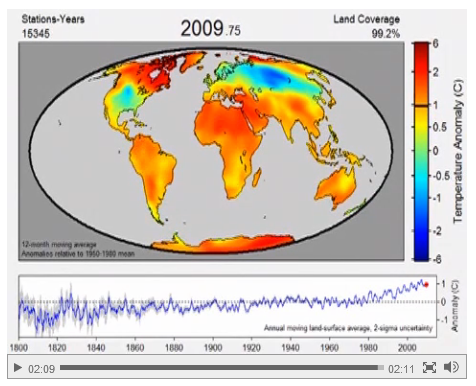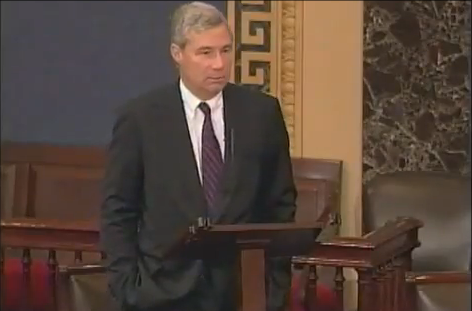The following essay was written by Cheryl McNamara, Communications Officer of the Citizens Climate Lobby. I am pleased to present it here.
 Earlier this month, the world convened once again to nail down a post-Kyoto commitment on climate change. And once again the climate talks, held in Durban, South Africa, generated a cacophony of voices and more finger pointing that inevitably led to disappointment on one hand and relief on the other that no deal has been reached yet to significantly reduce global greenhouse gas emissions.
Earlier this month, the world convened once again to nail down a post-Kyoto commitment on climate change. And once again the climate talks, held in Durban, South Africa, generated a cacophony of voices and more finger pointing that inevitably led to disappointment on one hand and relief on the other that no deal has been reached yet to significantly reduce global greenhouse gas emissions.
At the crux of this struggle between committing to science-based reduction targets and continuing business as usual is the tension between pushing for paradigm change and holding fast to the status quo.
Change tends to scare people. People don’t like to see the world in which they grew up – its views and expectations – shift abruptly. But in order to prevent global temperatures from reaching dangerous levels – which will also trigger abrupt societal changes as a result of rising sea levels, compromised agriculture and so on – we are asked to collectively and quickly shift our economies and behaviours.
Is it any wonder that among those contributing to the climate change conversation is a small but highly vocal group who question the science, despite the robust research, declaring global warming to be a lie, dreamt up by devious liberals to take over the world?
More conservative voices, however, are now joining the climate action chorus, including religious, military and business leaders. The Pope, in particular, has been a vocal climate action proponent, calling on negotiators in Durban “to craft a responsible and credible deal to cut greenhouse gases that takes into account the needs of the poor.” Recently Canadian representatives of 30 faith communities and organizations issued a statement calling for global action on climate change and equating climate action with public well-being.
The U.S. military is also taking a lead, foreseeing security threats that will come with a warming world and continued dependency on oil from hostile countries. Recognizing that clean energy development is critical to national security, the U.S. Department of Defence plans to annually spend $10 billion on renewable energy for military application by 2030. Just as the military gave civil society the Internet and GPS, so too will it help fast track innovations and market development of renewable energy technologies.
The business community too sees the writing on the wall. According to Torsten Jeworrek, CEO of reinsurance operations at Munich Re, the world’s largest reinsurer, “switching from fossil fuels to renewable energy is the prime task this century faces and offers substantial financial opportunities.”
To facilitate renewable energy development, the Canadian Council of Chief Executives (CCCE) is calling for “a broad-based carbon pricing scheme that is transparent and predictable.” Such a mechanism will help change behaviours, and spur innovation and the development of cleaner energy sources, products and services, according to the CCCE.
Rather than heed their advice, Foreign Minister John Baird declared that Canada will never adopt a carbon tax. Never is a long time, particularly when we are running out of it.
In its recently released World Energy Outlook, the International Energy Agency (IEA) warns countries of “locking into an insecure, inefficient and high-carbon energy system.”
Even Ed Stelmach, Alberta’s former Premier, recognized the danger of becoming too reliant on its resources, warning that Albertans could find themselves “watching the global economic game from the sidelines – because our resource wealth made us too comfortable, and we lost the drive to achieve and perform at a critical moment.”
The critical moment is now. Wayne Gretsky famously said that the secret to his success was skating to where the puck was heading, not to where it was. With mounting calls to reduce greenhouse gases, diminishing supply from conventional oil wells, and innovation in clean energy technology, it’s clear where the puck is heading.
Canada has a choice. Either lock into an insecure high-carbon system, or legislate a mechanism that sends a clear market signal to nourish an industry poised to surge, bring new life back to our ailing manufacturing sector, create an abundance of quality jobs, and create healthier communities.
Change is difficult. But not when it generates great benefits. By putting a price on carbon that increases annually and giving the proceeds back to citizens to stimulate the economy we can develop a sustainable society for our kids and grandkids. Isn’t that what true conservatism is all about?




















 In an effort to address
In an effort to address